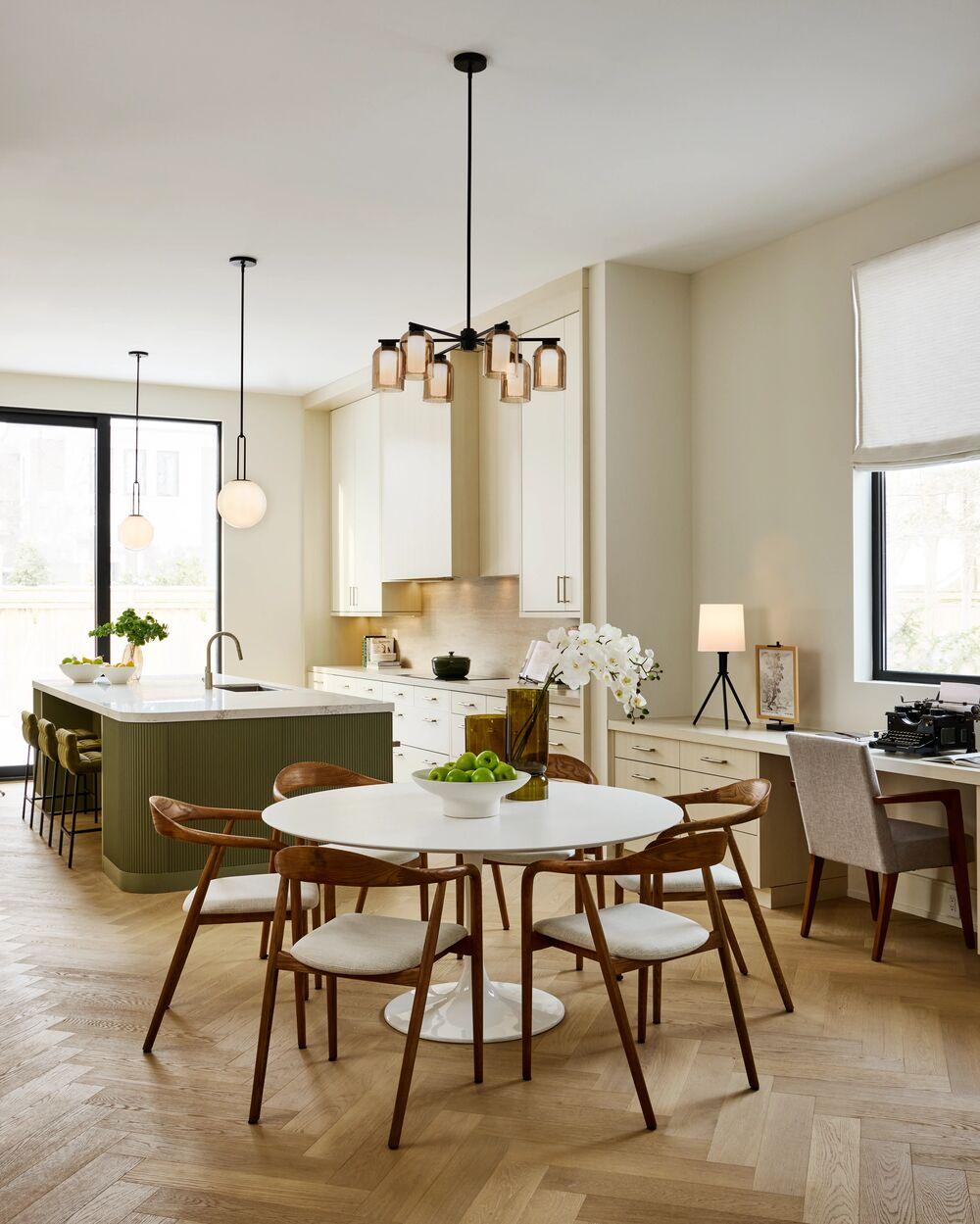Using Lighting to Define Zones in Open-Concept Homes
Open-concept homes have surged in popularity due to their spaciousness and fluid design, making them ideal for modern living. However, one common challenge homeowners face is creating distinct functional zones within these large, open spaces. Using lighting to define zones in open-concept homes is a creative, practical solution that not only enhances aesthetics but also improves usability.
Why Define Zones in Open-Concept Homes?
Open-concept layouts combine multiple living areas – such as the kitchen, dining, and living room – into a single expansive space. While this design fosters social connection and natural light flow, it can sometimes feel chaotic or overwhelming without clear boundaries. Defining zones accomplishes several goals:
- Enhances functionality: Different activities require different atmospheres and lighting.
- Improves flow: Creates natural separations that guide movement and organization.
- Boosts décor impact: Allows you to highlight architectural features and design elements in each zone.
- Increases comfort: Tailored lighting improves mood and usability in specific areas.
How Lighting Can Define Zones in Open-Concept Spaces
Lighting is more than illumination – it shapes perception and atmosphere. Using varied lighting techniques, you can establish distinct zones, balancing openness and separation without physical barriers.
1. Layered Lighting for Multi-Zone Definition
In open-concept interiors, combining different lighting layers creates depth and differentiation. Consider the three main types of lighting:
- Ambient Lighting: General lighting that illuminates the whole space uniformly, like recessed lights or ceiling fixtures.
- Task Lighting: Focused light for specific tasks, such as pendant lights over kitchen islands or reading lamps in seating areas.
- Accent Lighting: Decorative or highlight lighting that draws attention to art, architectural details, or particular zones.
By strategically layering these types of lighting in each zone, you visually and functionally separate spaces without walls.
2. Use of Pendant and Chandeliers as Zone Markers
Pendant lights and chandeliers provide both illumination and visual anchors. Suspend a chandelier over the dining table or pendant lights above the kitchen island to clearly signal respective zones. This approach works well because the eye naturally associates light fixtures with functional areas.
3. Dimmers and Smart Controls for Flexible Zoning
Installing dimmers and smart lighting controls gives you the power to change zone moods at will. Brighten the kitchen for cooking, dim the living room for relaxation, or spotlight the reading nook during evenings – all while maintaining the open-plan feel.
4. Color Temperature Variations to Differentiate Zones
Employing varied color temperatures (measured in Kelvins) subtly distinguishes spaces:
- Warm white (2700K-3000K): Cozy and inviting, perfect for living and dining zones.
- Neutral white (3500K-4100K): Clear and balanced, suitable for task areas like kitchens or home offices.
- Cool white (5000K+): Crisp and energizing, best for workout or hobby zones.
Benefits of Using Lighting to Define Zones
| Benefit | Description |
|---|---|
| Improved Functionality | Tailors lighting to specific activities, enhancing usability and comfort. |
| Visual Appeal | Creates a well-designed, layered look that accentuates the home’s features. |
| Flexible Space Use | Allows easy transformation of space moods and functions through lighting controls. |
| Space Definition Without Walls | Maintains the airy feel of open concepts while clearly marking zones. |
Practical Tips for Lighting Zones in Open-Concept Homes
- Start with a Lighting Plan: Map your space to decide which zones need task, accent, and ambient lighting.
- Select Appropriate Fixtures: Use varied fixtures such as recessed downlights, pendants, floor lamps, and wall sconces.
- Invest in Dimmers and Smart Systems: Enhance control and mood customization for every zone.
- Pay Attention to Scale and Height: Fixture sizes and mounting heights should complement the zone size and ceiling height.
- Use Rugs and Furniture to Complement Lighting: Together, they create cozy and well-defined centers of attention.
- Highlight Architectural Features: Use accent lighting to enhance columns, shelves, or textures, lending natural boundaries.
Case Study: Transforming a Loft with Lighting Zones
Let’s look at an example of a 1200 sq. ft. loft, initially a one-room space with an open kitchen, dining, and living area but lacking any sense of separation.
| Zone | Lighting Solution | Result |
|---|---|---|
| Kitchen Island | Cluster of adjustable pendant lights with bright neutral white LED bulbs | Defined cooking and prep area with focused task lighting |
| Dining Area | Central chandelier with warm dimmable bulbs | Creates an inviting focal point for meals and socializing |
| Living Room | Recessed ceiling lights with dimmers, plus floor lamps for accent | Flexible ambient lighting for relaxation or entertainment |
After installing these lighting elements and integrating smart controls, the loft felt more organized and purposeful without compromising openness.
First-Hand Experience: Expert Interior Designer’s Advice
According to Maria Jensen, a renowned interior designer specializing in open-concept spaces, “Lighting can make or break the flow of an open-concept home. I always recommend my clients to use multiple layers of lighting combined with dimmers. This allows the space to morph throughout the day, creating the right atmosphere for work, play, or downtime within one large room.“
She further emphasizes the importance of using lighting to anchor each zone, “Especially with pendant fixtures and table lamps, you can visually ‘mark’ distinct areas without erecting walls or heavy dividers.”
Conclusion
Using lighting to define zones in open-concept homes is an intelligent design strategy that balances openness with organization. By layering different lighting types, incorporating statement fixtures, and leveraging smart controls, you can create distinct yet harmonious zones tailored to your lifestyle. Not only does this elevate your home’s functionality, but it also boosts aesthetic appeal and comfort – proving that great lighting can truly transform open spaces.
Whether you’re designing a new open floor plan or wanting to refresh an existing one, consider lighting your invisible walls for better living. Experiment with colors, intensities, and fixture styles to unlock the full potential of your open-concept home.



